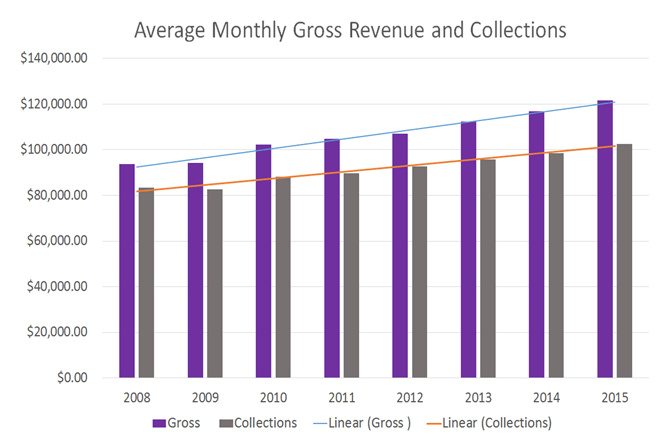Most dental schools are bleeding money. Student tuition for most dental school pays less than half the dental school’s total expenses. A recent article about the University of Washington Dental School is a window into this situation. State and Federal funds aren’t increasing at nearly the same rate as the upsurge in costs. Students are already paying an exorbitant amount of money for dental school tuition and equipment, while tuition costs continue to rise unabated (see graph below). Where is all this headed? What impact will it have on existing practices — large and small?

American Dental Education Association
Each year, there are approximately 4 million births and 2.4 million deaths in the United States. Population growth (total births minus deaths) is 1.6 million people per year. According to the Census Bureau’s decennial census, the U.S. population is growing by around 3.3 million per year. Factor in the fact that people are living longer: more dentists will be needed than ever before.
Without increasing the number of new dentists, the system will go into disarray. Baby boomers and late Generation X dentists are headed for the exit. Who will fill their space? Midlevel providers will ease some of the burdens, but not nearly enough. The need for more dentists is increasing, and will continue to go up.
Pressure to increase the number of dentists will come from government, insurance companies, hospitals, DSOs, suppliers, and the market itself. Each segment needs more dentists to fulfill their respective goals. Insurance companies need dentists to expand their networks and attract customers. Hospitals need dentists to staff their emerging dental clinics. DSOs need dentists to grow. Suppliers need dentists to sell their wares. Dental schools need applicants to stay meaningful and warrant government funding. And people need dentists for their oral and systemic health.
With the amount of debt students incur on the path to becoming a dentist, many college students now considering a professional career are eliminating dentistry from their options due to the cost of dental school tuition. As demand for greater access to dentistry increases, coupled with a shrinking supply of new dentists, we’re headed for a problem.
The U.S. dental market is divided into two segments — professional dental equipment and supplies and consumer dental care, care provided by dentists. Both of these groups generate major profits. The total market for dental care and dental products was valued at $13 billion in 2011, and exceeded over $14.3 billion in 2016, yielding an overall compound annual growth rate of 2 percent.
The consumer dental care segment was valued at nearly $5 billion in 2011, and in 2016 reached nearly $5.5 billion, an increase of 1.9 percent. As reflected in the graph below, dentist revenues continue to increase at a substantial rate.

The segment made up of professional dental equipment and supplies accounted for more than $8 billion in 2011, and after increasing at a rate of 2.1 percent the segment reached over $8.9 billion in 2016.
Below is a graph depicting the increasing revenues of dental suppliers.

Although realizing significant profits, these two segments — suppliers and dentists — have contributed little to the new-dentist dilemma. Rather, what professional dental equipment and dental suppliers and dentists are doing is complaining — complaining about the dental schools, student debt, shortage of graduating dentists, quality of new-dentist training, quality of new dentists, etc. But are they doing anything about this situation? Nope. Dentists, their groups, suppliers, and vendors in the industry are not contributing their time and real money to solving a steadily worsening problem.
Complaints frame you as being right and others as being wrong. Complaints eschew responsibility. If the dental industry doesn’t address this growing problem with dental schools, they are negligent in their responsibility to the industry that fosters their success. Suppliers and dentists today disregard their obligation to their industry. They think new dentists are somebody else’s problem.
If the industry contributed back 1 percent of their gross to dental schools, the results would be $1.4 billion dollars. Would that be enough to cover all costs for dental schools so they could adjust their tuition and increase class size? Maybe not all, but it would make a huge impact.
Until the practicing dentists, dental groups, suppliers, and vendors understand they are responsible for the future of their industry; until they take accountability and directly contribute to the solution, the problem will worsen — and eventually it will “kill the goose that laid the golden egg.”
— Marc



